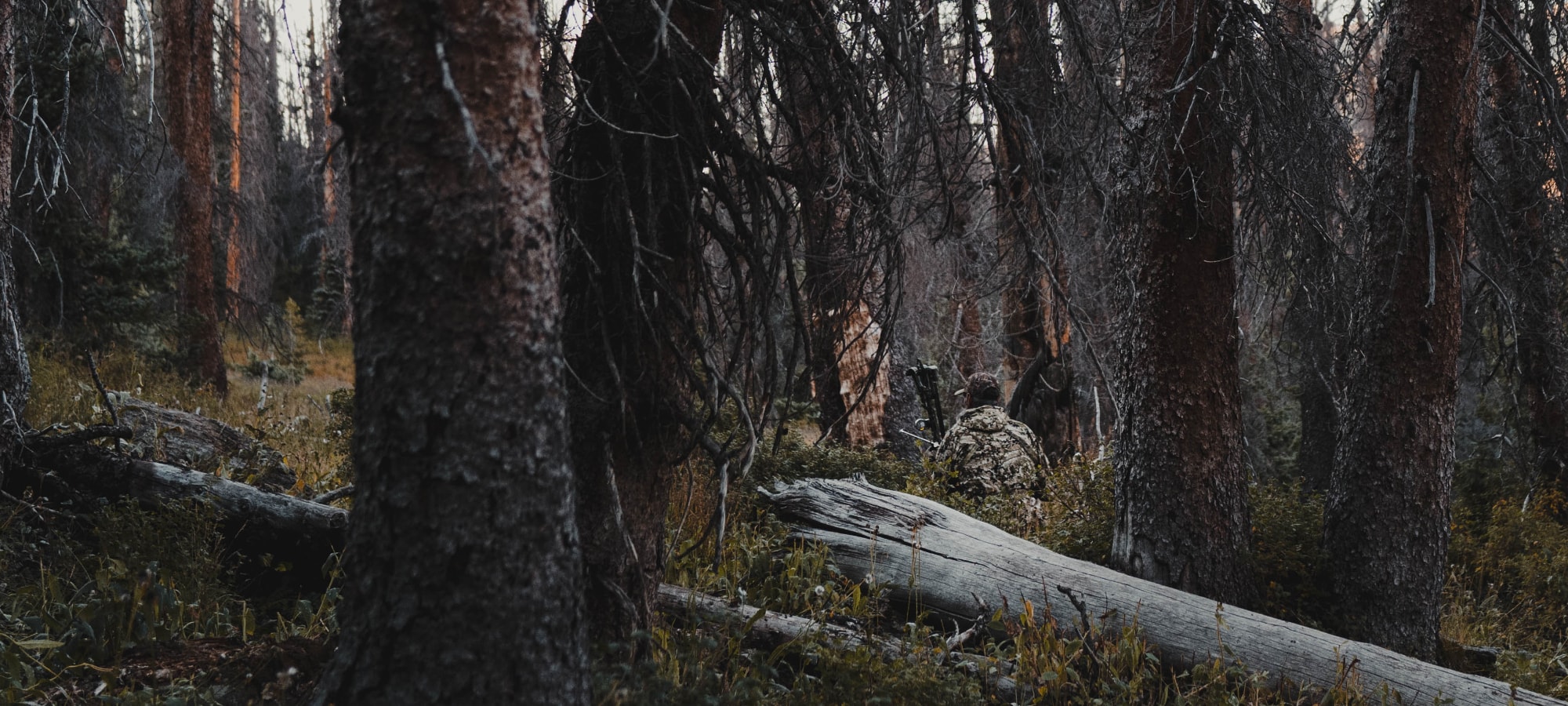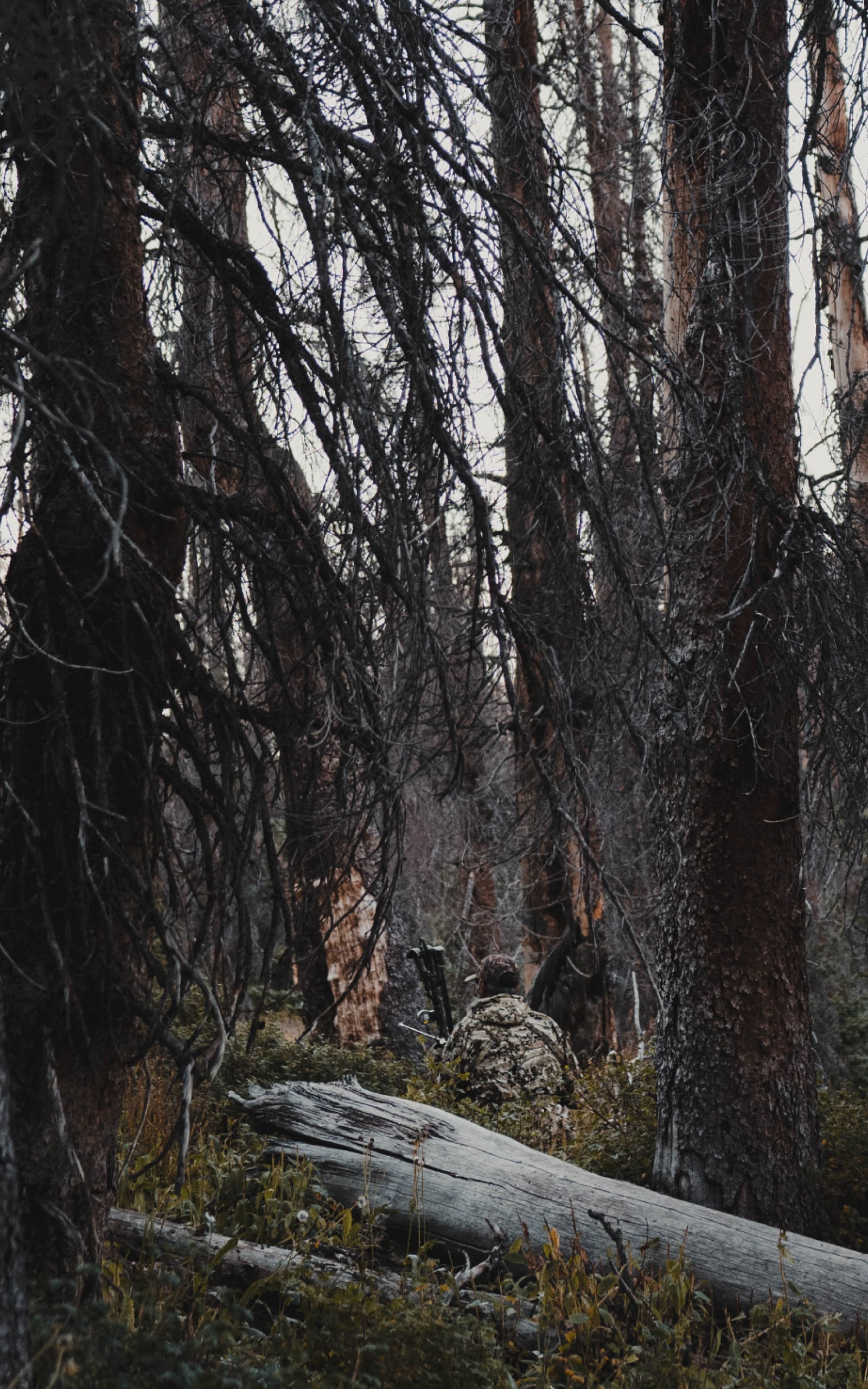10.22.2024
Best Camo for Elk Hunting Explained
When it comes to elk hunting, selecting the perfect camouflage presents a unique challenge due to the varied landscapes where elk roam. From dense forests to open meadows and mountainous terrain, elk can be found in a wide variety of vegetation and terrain types. When choosing a realistic-looking stick-and-leaf type camo pattern, this makes it difficult to match a precise pattern with the terrain you’ll be hunting, especially considering that you may be hunting different terrain types on any given day. Luckily, elk focus more on movement and contrast, so prioritizing breaking up your outline over perfect color matching is a key to success.
Keep reading for tips on selecting the perfect camo pattern for your elk hunt, and for building a complete hunting clothes system that fits your specific needs.
The Diversity of Elk Habitats
Understanding Elk Environments
When selecting the appropriate camouflage for elk or big game hunting gear, consider the terrain you’ll be hunting. Dark greens and browns can match coniferous forests, tan and light brown for grasslands, and grays and browns for rocky landscapes. Oftentimes, you’ll be hunting all these types of terrain on any given hunt—sometimes even the same day.
Camo for Every Terrain
Seasonal variations are used to demand different types of camo for different seasons. While something like Mossy Oak might work mid-to-late fall, another pattern might be best for early season. Through detailed shading and colorization, patterns like OPTIFADE Subalpine make the decision for elk hunters simple.
Elk, and other ungulates like deer, possess dichromatic vision, perceiving a limited range of colors while being highly attuned to movement and contrasts. Therefore, effective camouflage clothing should prioritize breaking up the human outline rather than solely focusing on color accuracy. Modern camouflage designs often incorporate three-dimensional elements and lifelike patterns to seamlessly blend in with the natural environment.
Apart from visual factors, practical aspects also come into play when it comes to knowing how to hunt elk. Hunters require fabrics that minimize noise to prevent startling elk, along with sturdy, weather-resistant materials that can endure challenging weather conditions. Breathable fabrics are essential to ensure comfort during physical activities in the wilderness. SITKA’s Intercept System is perfect for early-season hunts when the big bulls are bugling. Made of ArmorSpun Merino Wool, this system is silent, scent-resistant, and durable. The pants feature a side zip to help cool you off while putting miles on the mountain. The hoodie uses elbow pads to increase comfort on those long stalks.
The Science of Camouflage
Breaking Up the Silhouette
When it comes to hunting elk, one of the most critical aspects of staying concealed is breaking up the human silhouette, and this is where advanced camouflage techniques come into play:
Disrupting Visibility: The most effective camouflage designs work by obscuring the human shape using a blend of colors, shapes, and textures that seamlessly merge with the natural surroundings. This concealment is essential for decreasing the chances of hunters being noticed by elk, animals that are acutely attuned to movement and contrasts rather than specific colors.
Color Coordination: Successful camouflage incorporates a variety of colors that harmonize with the environment, such as greens, browns, and greys for forests, or tans and light browns for open fields. These colors aid in merging the hunter with the backdrop, reducing the risk of detection.
Breaking Outlines: Camouflage schemes feature irregular patterns and lines that disrupt the distinct human silhouette. Digital-designed camouflage utilizes pixelated motifs or raised elements to create a more intricate visual profile, imitating the diverse textures and shadows present in nature. This type of camo pattern is the ultimate in camo clothing, as it works in every type of terrain.
Versatility: Flexible camouflage patterns are crafted to function effectively in different landscapes and seasons, ensuring that the hunter remains hidden, whether in dense forests, open fields, or rocky areas.
Through the implementation of these techniques to disrupt the human form, camouflage designs significantly lower the risk of detection by elk, improving the hunter's stealth and boosting the likelihood of a successful hunting endeavor. Choosing the right camo pattern is one of the most important pieces of hunting gear in the big game hunter’s arsenal.
Choosing Your Camo
Factors to Consider
When selecting the right camouflage for your elk hunting gear, there are several key factors to keep in mind to ensure maximum concealment and adaptability in various environments:
Avoid High Contrast: Steer clear of solid colors that stand out in natural settings. Opt for camo patterns with a blend of colors that mimic the environment for better concealment.
Blend In: Ensure your camouflage matches the predominant colors of your hunting area, like greens and browns for forests or tans and grays for rocky terrain.
Break the Outline: Choose camo with irregular patterns that disrupt the human silhouette and include 3D elements for a more natural look.
Adaptability Across Environments: Select neutral-colored camo that can work in various terrains, offering concealment from forests to open fields.
Layer Up: Consider layering for hunting with neutral camo as a base layer to adjust to different surroundings easily.
Seasonal Versatility: Consider patterns that blend well with autumn foliage and winter snow to maintain effective concealment throughout the hunting season.
SITKA Gear’s Solutions
GORE™ and SITKA’s OPTIFADE™ patterns stand out from the crowd with their innovative approach of using a digital mix of small and large patterns to deceive animal vision. Developed by a team of experts in camouflage and animal sight, GORE OPTIFADE Concealment considers how elk and mule deer perceive their surroundings in wooded areas. The outcome is a design with enhanced contrast achieved through intricate shading and coloring techniques. In simple terms, this camouflage allows you to seamlessly blend in with nature.
GORE OPTIFADE Subalpine, in particular, is tailored for the stealthy approach and ambush of hoofed animals at ground level in wooded and vegetated environments. These happen to be the kinds of environments you’ll typically find yourself in when hunting elk, making Subalpine an ideal camo pattern for most elk hunters. Subalpine is specifically optimized for distances of less than 50 yards, ensuring effective concealment in the wild. Check out the full lineup of OPTIFADE Subalpine products.
More than just camo patterns, SITKAs product designers work tirelessly to ensure that each product they create is designed to solve a specific problem hunters face. After rigorous testing both in the lab and in the field, and input from GORE’s team of experts and hardcore hunters alike, each SITKA product is created for the utmost quality and attention to detail. To construct your perfect hunting clothing system, check out the System Builder to make sure you have the hunting base layers, mid-layers, and outerwear you need for your next adventure.
Sources
Houston, Jay. n.d. “Effective Camouflage Can Make a Difference.” ElkCamp. Accessed September 24, 2024. http://www.elkcamp.com/camo.html.
Jimmie Norris. 2019. “Best Camo Pattern for Elk Hunting - Elk Hunters Guide.” Elk Hunters Guide. December 2019. https://elkhuntersguide.com/best-camo-pattern-for-elk-hunting/.


